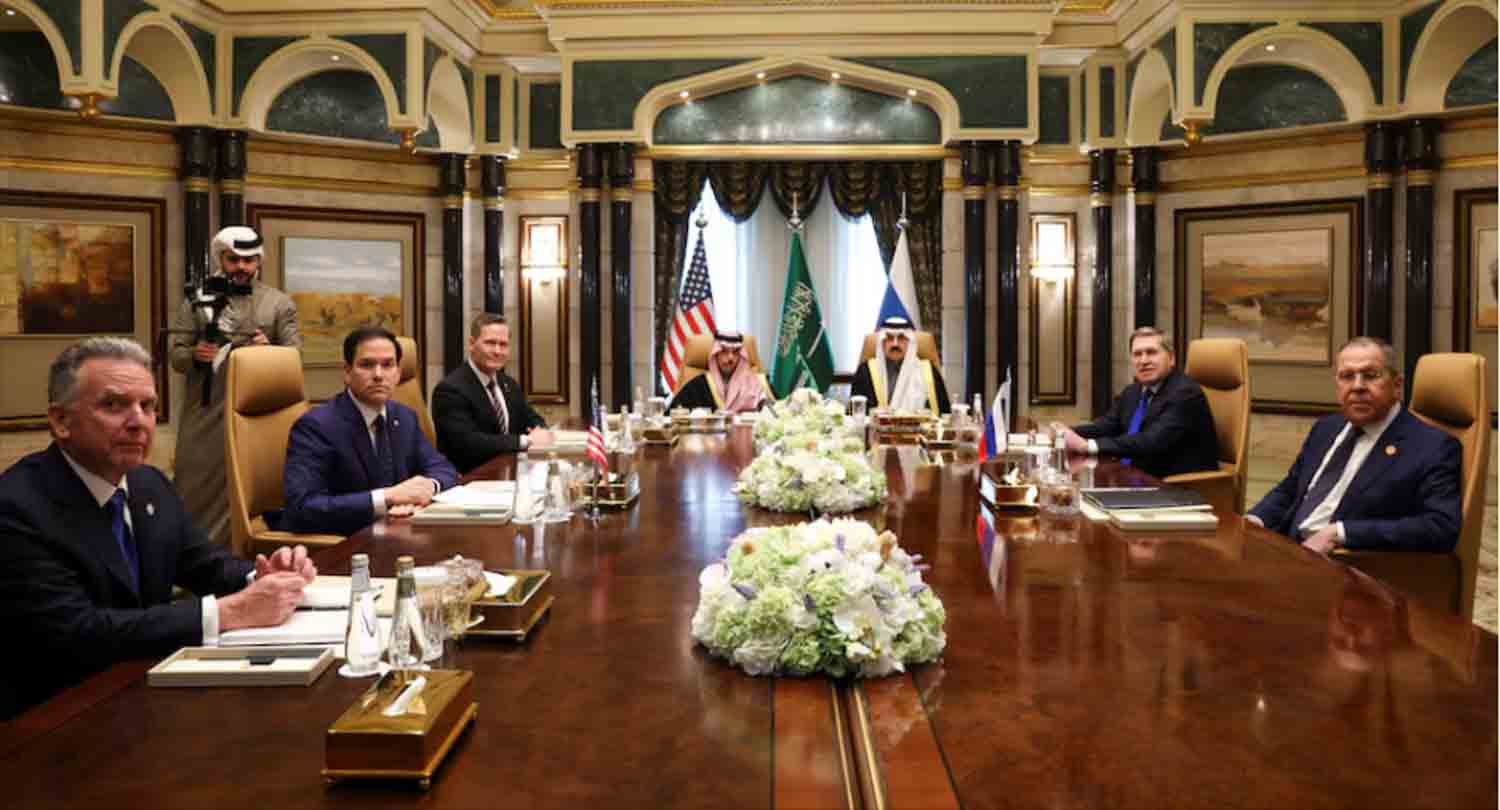It is a rare occurrence to witness American and Russian warships conducting joint training exercises. In fact, such collaboration has been virtually nonexistent over the past three years, particularly following Russia’s invasion of Ukraine and its subsequent diplomatic estrangement from the United States and much of Europe. However, Indonesia is altering this dynamic.
While these nations have been rivals in recent times, this week marks a different chapter as warships from Russia, China, the United States, India, Australia, Indonesia, Singapore, and others gather for Exercise Komodo 2025. The highlight of this event is the unusual participation of both the U.S. and Russia. The United States is represented by the Arleigh Burke-class destroyer USS Dewey, while Russia is contributing the corvettes Rezky and Hero of the Russian Federation Aldar Tsydenzhapov, along with the medium sea tanker Pechenga.
The 2025 Komodo Multilateral Naval Exercise is scheduled to take place from February 15 to February 22 in Bali, Indonesia. This biennial event, organized by the Indonesian Navy, emphasizes non-combat operations, particularly focusing on humanitarian assistance and disaster response.
The core objective of the Komodo exercises is to enhance multilateral maritime cooperation and interoperability among navies in the Asia-Pacific region. The activities aim to foster relationships and collaboration in non-combat scenarios, especially in the realms of disaster management and humanitarian aid. This year’s theme is “Maritime Partnership for Peace and Stability.”
The exercise encompasses a range of activities, including an officer exchange forum, bilateral discussions between naval forces, an international maritime security symposium, a defense exhibition, and cultural parades. Additionally, there is an environmental conservation initiative featuring activities such as mangrove planting and the release of turtle hatchlings, which are designed to combat coastal erosion and raise environmental awareness.
From a tactical perspective, the emphasis is placed on non-combat operations. This involves simulated scenarios for maritime rescues and responses to humanitarian crises, such as natural disasters. The exercises are designed to enhance the coordination and effectiveness of humanitarian missions, maritime security, and disaster relief operations.
Safety, collaboration, and the sharing of best practices are prioritized during the exercise. Activities are carried out in a way that fosters peace, mutual understanding, and regional stability. There is a significant focus on engaging non-combatants, with an emphasis on coordination and joint operational capabilities in peaceful contexts, particularly in disaster response scenarios.
This year’s Komodo exercise is notable for uniting navies from countries with varying geopolitical perspectives, demonstrating a shared commitment to maritime security and humanitarian initiatives despite existing global tensions. The participation of such a diverse array of nations highlights the exercise’s goal of promoting goodwill and cooperative maritime security in the Indo-Pacific region.
The characteristics of the naval exercise do not prevent us from delving deeper into the details of two notable warships involved. These vessels are the American destroyer USS Dewey and the Russian corvette Rezky.
The USS Dewey [DDG-105] exemplifies the forefront of American naval engineering, being an Arleigh Burke-class guided-missile destroyer. Commissioned in 2010, it pays tribute to Admiral George Dewey, a distinguished figure from the Spanish-American War.
As a member of Destroyer Squadron 1, the USS Dewey operates under Carrier Strike Group One, with the USS Carl Vinson serving as its flagship. Constructed by Northrop Grumman Ship Systems in Pascagoula, Mississippi, this destroyer measures approximately 155 meters in length and has a full-load displacement of around 9,200 tons.
The ship is powered by four General Electric LM2500-30 gas turbines, enabling it to reach a maximum speed of 30 knots and cover approximately 4,400 nautical miles at cruising speed. Its armament is impressive, featuring the Aegis Combat System with a SPY-1D radar, vertical launch systems for a variety of missiles including Tomahawk cruise missiles and Standard Missiles for air defense, a 5-inch/54 caliber Mk 45 gun, and close-in weapon systems such as the Phalanx CIWS to counter incoming threats.
Additionally, it is outfitted with cutting-edge technologies like the Laser Weapon System [LaWS] for precise targeting and the Optical Dazzling Interdictor, which enhance its effectiveness in contemporary naval combat.
Conversely, the Russian Navy’s Rezky corvette, part of the Steregushchiy class [Project 20380], signifies a notable advancement in Russia’s naval modernization initiatives. Designed by the Almaz Central Marine Design Bureau, Rezky was commissioned in September 2023 and is specifically optimized for operations in coastal waters.
With a length of approximately 104.5 meters and a displacement of around 2,200 tons, this vessel is significantly smaller than the USS Dewey, yet it is specifically designed for coastal combat. The corvette is powered by four Kolomna 16D49 diesel engines, enabling it to reach a maximum speed of 27 knots and cover a distance of 4,400 nautical miles at cruising speed.
Its armament features either a 100mm A-190 or a 130mm A-192 gun, the Redut vertical launch system equipped with 9M96E missiles for air defense, anti-ship missiles such as the Kalibr, AK-630 close-in weapon systems, and torpedo tubes for anti-submarine operations. The Rezky also incorporates stealth technology through its composite superstructure and hull, which minimizes its radar signature, an essential aspect for conducting operations near the coastline.
When evaluating these two ships, several important factors regarding their respective strengths and weaknesses come to light. The USS Dewey, classified as a destroyer, enjoys advantages from its larger size, allowing for more advanced weaponry and systems. Its Aegis Combat System offers enhanced air and missile defense capabilities, potentially providing an advantage in scenarios involving aerial threats.
Additionally, the inclusion of laser weapons and optical dazzlers further bolsters its defensive and offensive potential in contemporary naval engagements. However, the destroyer’s size and complexity may hinder its maneuverability in confined or shallow waters, an area where the design of the Rezky excels.
Rezky’s strengths are rooted in its tailored design for operations in coastal regions. Its compact size, along with stealth capabilities, enhances its ability to remain undetected, which could facilitate more effective surprise assaults or defensive actions during littoral engagements. Although the corvette’s armament is not as varied or long-range as that of the USS Dewey, it is specifically designed to address both surface and underwater threats in close proximity to shore.
However, Rezky’s limited operational range and smaller dimensions render it less effective for prolonged missions away from its home ports, and its missile defense system may not be as advanced as the Aegis system found on the USS Dewey.
In a head-to-head encounter, Dewey’s advanced radar, missile range, and defensive capabilities would provide a significant edge in open-water confrontations, particularly against aerial threats. Nevertheless, Rezky could present a formidable challenge in coastal or littoral combat situations, utilizing its maneuverability and stealth to gain tactical advantages.
Each vessel embodies its respective nation’s naval strategy: the United States prioritizing global power projection through versatile, technologically advanced destroyers, while Russia emphasizes the protection of its extensive coastal territories with specialized, cost-efficient corvettes.
Discover more from Defence Talks | Defense News Hub, Military Updates, Security Insights
Subscribe to get the latest posts sent to your email.





